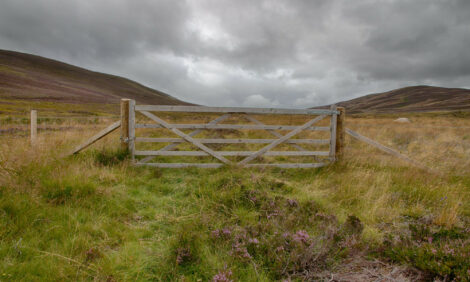



Big Surprises in USDA Quarterly Hogs and Pigs Report
US - Arguably one of the biggest surprises in the USDA's latest Quarterly Hogs and Pigs report was the number of hogs that are expected to come to market between December and May, writes the Steiner Consulting Group.The inventory of hogs over 180 pounds, which are hogs that should come to market by the third week of January, were 12.580 million head, 2.5 per cent higher than a year ago and in line with pre‐report estimates.
However, the inventory of hogs between 120‐179 pounds was pegged at +4 per cent above year ago levels.
These are hogs that should come to market between late January and late February. Hogs in the 50‐119 category, basically late February and mid April timeframe, were also expected to be up 4.5 per cent from last year and feeder pigs under 50 pounds (late April thru May) were up 4.4 per cent.
The latest inventory numbers reflect a significant upward revision in the pig crop for the Sep‐Nov time period and thus more hogs available for marketing this coming spring.
Analysts had projected the pig crop for this period to be up just 1.5 per cent. Instead the USDA survey pegged the Sep‐Nov at 32.3 MM head, 4.8 per cent larger than last year. Why such a dramatic shift? Notice the sharp revision in farrowings from the earlier estimate. Instead of farrowings being flat, they actually were up 3.9 per cent for the quarter.
Weather may have played a role, with a mild fall possibly impacting sow performance. But it also should be noted that for several quarters producers have been understating farrowings relative to the breeding herd size, offering very low intention numbers that are then belied by follow up surveys and ultimately final slaughter.
The latest survey also implies summer and fall hog supplies to be up by compared to last year. We will set aside any efforts to handicap the farrowing intention numbers and judge them at face value.
Producers expect farrowings during Dec‐Feb to be 1.4 per cent higher than a year ago (these are Jun‐Aug hogs) and Mar‐May farrowings are forecast to be up 1 per cent (these are Sep‐Nov hogs). The pig crop for the quarter is a combination of farrowings and pigs per litter.
Pigs per litter in the Sep‐Nov quarter were up 0.9 per cent but the longer term trend is for quarter to increase at an annualized 1.5 per cent rate. So the pig crop number you derive for the summer and fall will depend in part on what kind of pigs per litter growth rate you want to assume. If we take a conservative +1 per cent growth rate then the latest USDA report implies +2.4 per cent growth for summer hog supplies and +2 per cent growth rate for next fall.
But those numbers could easily be another half a percentage point higher given a slightly larger pigs per litter number. A milder winter this year also could bolster those numbers.
And if you want to handicap the farrowing intention numbers supply growth could be even more significant. Disease pressures so far this winter have been minimal, corn supplies are plentiful and cheap(er) and the futures board is offering producers the ability to lock in a margin even during this tremendous expansion.
The size of the breeding herd is critical in setting the stage for both short term and medium term supply growth. The hog breeding herd as of December 1 was 6.090 million head, 1.5 per cent higher than a year ago and much higher than pre‐report estimates (see page 2).
Market participants and analysts continue to underestimate the strong incentives for continuing to expand pork production. Despite its very bearish undertones, futures so far have shrugged off its implications, instead focusing on the very robust demand picture.








